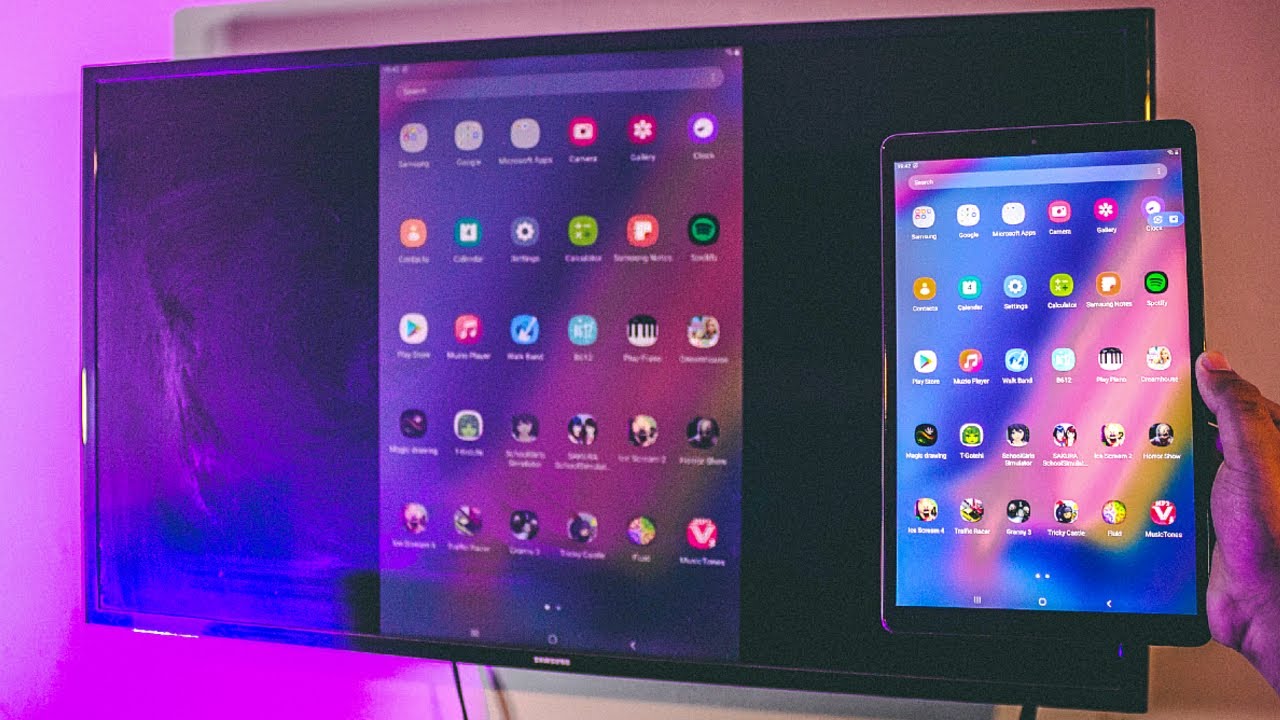
Understanding Your Tablet's Capabilities
Connecting an Android tablet to a TV can enhance your viewing experience. Before starting, it's important to understand whether your tablet supports HDMI input directly. Most modern Android tablets do not have HDMI ports; instead, they often use USB Type-C ports. If your tablet has a USB Type-C port, you can use a USB-C to HDMI adapter to connect it to a TV.
Checking Your Tablet's Specifications
To determine if your tablet supports HDMI input, follow these steps:
- Open Settings: Tap the Settings app on your tablet.
- Navigate to Display: Scroll down and select the "Display" option.
- Look for HDMI Settings: Check if there are any options related to HDMI or screen mirroring. If no HDMI settings are visible, it's likely your tablet does not support direct HDMI input.
Setting Up HDMI Input
If your tablet does not support direct HDMI input, you can use an HDMI adapter to connect it to a TV. Here’s how you can set up an HDMI adapter:
Gathering Required Cables and Adapters
To set up HDMI input on your Android tablet, you'll need the following items:
- HDMI Cable: Connects the tablet to the display device.
- USB Type-C to HDMI Adapter: Converts the USB Type-C port on your tablet to an HDMI output.
- Power Source: Some adapters may require external power.
Connecting the HDMI Adapter
- Plug the Adapter into the Tablet: Insert the USB Type-C end of the adapter into the corresponding port on your tablet.
- Connect the HDMI Cable: Attach one end of the HDMI cable to the HDMI port on the adapter.
- Power the Adapter: If your adapter needs external power, connect it to a power source using the provided cable.
Connecting to the Display
- Plug the HDMI Cable into the Display: Insert the other end of the HDMI cable into an available HDMI port on your TV or monitor.
- Select the HDMI Input: Use the remote control or buttons on the display to switch to the correct HDMI input channel.
- Verify the Connection: Ensure that the tablet screen is mirrored or extended on the display.
Configuring Your Android Tablet
Once you have connected your tablet to the TV using an HDMI adapter, you need to configure your tablet's display settings for optimal viewing.
Accessing Display Settings
- Open Settings: Tap the Settings app on your tablet.
- Navigate to Display: Scroll down and select the "Display" option.
- Choose Screen Mirroring: Look for options like "Screen Mirroring" or "Cast" and select it.
Adjusting Display Settings
- Resolution Settings: Adjust the resolution to match the capabilities of your display device.
- Screen Orientation: Choose between landscape or portrait mode based on your preference.
- Brightness and Contrast: Modify these settings for optimal viewing.
Testing the Connection
- Play a Video: Open a video or app to test the display.
- Check for Lag: Ensure there is no noticeable lag between the tablet and the display.
- Verify Audio: Confirm that sound is playing through the display device if desired.
Using Wireless Solutions Like Chromecast
If your tablet lacks a USB Type-C port or if you prefer a wireless solution, you can use Chromecast to mirror your screen to a TV.
Setting Up Chromecast
- Connect Chromecast to Your Video Source: Plug Chromecast into your TV's HDMI port and connect it to your video source (like a router).
- Download Google Home App: Download and install the Google Home app on your tablet.
- Set Up Chromecast: Open the Google Home app, tap on "Set up," and follow the instructions to connect Chromecast to your tablet.
Mirroring Screen with Chromecast
- Open Google Home App: Open the Google Home app on your tablet.
- Select Chromecast Device: Choose your Chromecast device from the list of available devices.
- Mirror Screen: Tap on "Cast screen" or "Cast tab" to mirror your tablet's screen to the TV.
Advanced Setups Using Capture Cards
For more advanced setups, you can use capture cards to connect external video sources to your tablet.
Using Capture Cards
- Connect Capture Card to Video Source: Connect the capture card to your video source (like a camera or game console).
- Link Capture Card to Tablet via USB: Connect the capture card to your tablet via USB.
- Use App Like CameraFi Live: Use an app like CameraFi Live to view the input from the capture card on your tablet.
Troubleshooting Common Issues
When connecting your Android tablet to a TV, you might encounter some common issues. Here are some troubleshooting tips:
No Signal on TV
- Check HDMI Connection: Ensure that the HDMI cable is securely connected to both the tablet and the TV.
- Select Correct HDMI Input: Make sure you have selected the correct HDMI input channel on your TV.
- Restart Devices: Sometimes, restarting both devices can resolve connectivity issues.
Lag or Delay
- Adjust Resolution Settings: Lowering the resolution might help reduce lag.
- Check for Software Updates: Ensure that both your tablet and TV have the latest software updates.
- Use Wireless Solutions: If lag persists, consider using wireless solutions like Chromecast.
Audio Issues
- Check Audio Settings: Ensure that audio is enabled and set to output through the TV.
- Use Optical Audio Cable: If audio is not working via HDMI, try using an optical audio cable.
